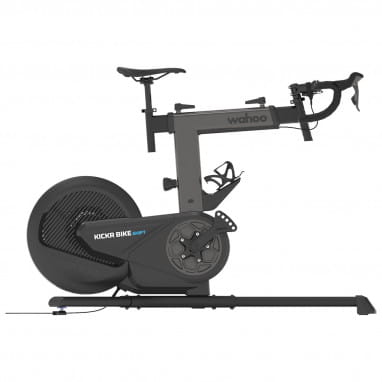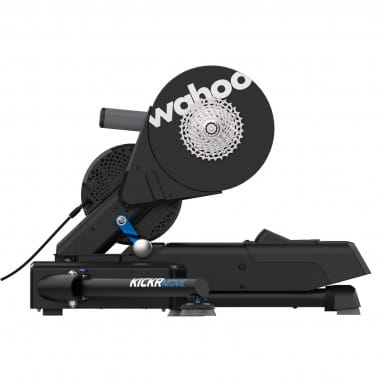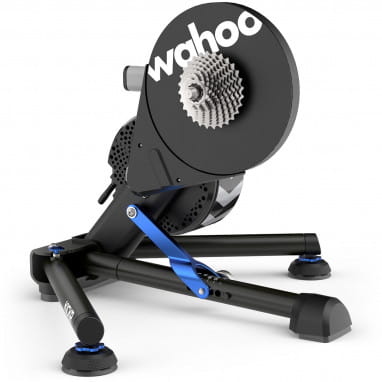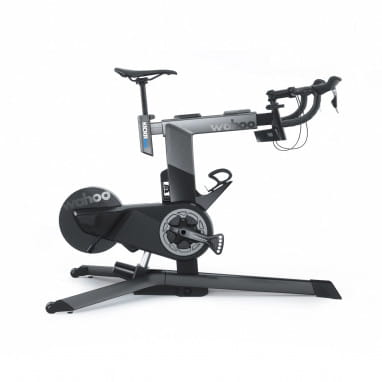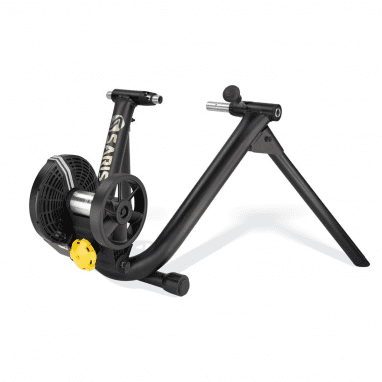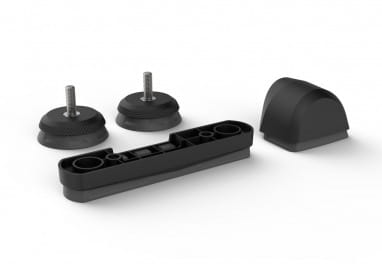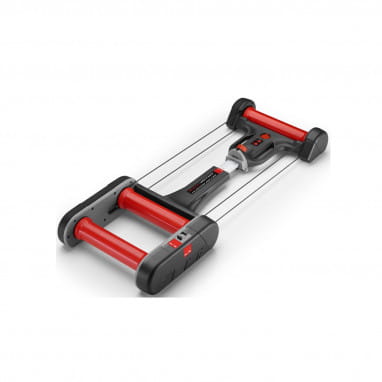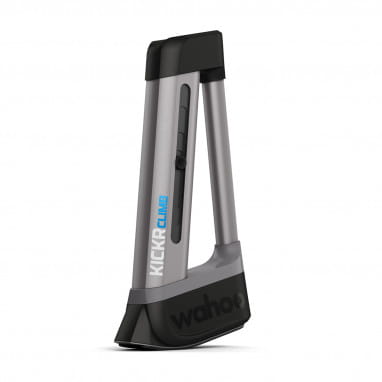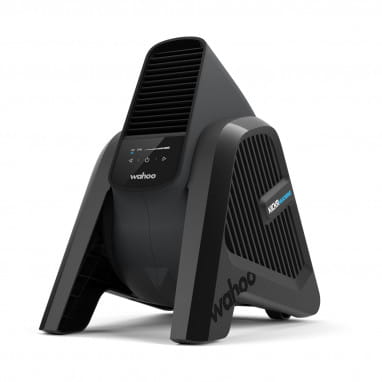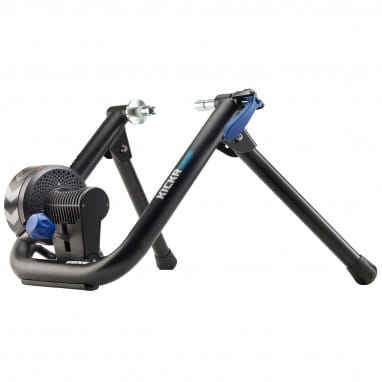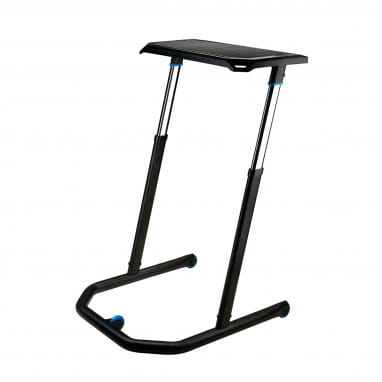Home trainer, roller trainer, exercise bike, trim bike, bike trainer, bike roller, exercise bike, scooter - all the same? No, not exactly. But the transitions are fluid. To make the confusion complete, there are also smart trainers and their evolution: virtual reality trainers.
So let's first clarify the capabilities of the different training devices:
- A home trainer can be many things, not only bike trainers count among them. Rowing machines or treadmills are also exercise bikes
- A bicycle trainer or ergometer is an exercise bike that can be used to exercise cycling indoors and on the spot. You don't need a bike for it; seat, pedals and handle are provided
- On a roller trainer your bike rides on one to three rollers instead of on the road
- On a fixed roller trainer a bike is attached. On a free roller trainer, an unattached bicycle rolls
- Roller trainers are also called bike rollers
- Roller is the English name for a roller trainer, it is also used in German from time to time
- A trim bike was a bike trainer before everything had to have an English name
- a home trainer is an exercise bike in English
- a cycle trainer is the somewhat inaccurate name for anything that combines cycling and living room workouts
- a smart trainer enriches your workout with different programs and features or can be networked with workout apps
- a virtual reality trainer is like training "for real," only better. Videos of bike routes are combined with a realistic riding experience, as the route and surface are simulated.
Don't be confused by the different terms, they are often just used interchangeably. If you look at the product pictures, you'll know right away what kind of exercise bike you're dealing with.
Which is the best exercise bike for my bike workouts?
The easiest option, of course, is the two-track. Your bike stays outside, inside is a bicycle trainer ready. There's everything you need on an exercise bike like this. You can buy it with heart rate monitor, comfortable seat and storage space for laptop or tablet. Plus, you don't have to change or install your bike. It just won't feel as good as your bike.
To use your bike for indoor training, you'll need a roller trainer or a smart trainer. If you have chosen a roller trainer, you are already quite a bit closer to your goal, however, there are still a few decisions waiting for you: first of all, there are big price differences, plus different systems that combine bike and bike trainer.
You have the choice between versions that work with the rear wheel (or roller trainer with thru axle, "wheel-on trainer" or "tire drive trainer") and training devices in which you install your bike without rear wheel (also "direct drive" or "direct drive trainer").
When your trainer replaces the rear wheel, it obviously saves your wheel and cassette on the one hand, but on the other hand you have to find a roller trainer that fits your bike (but there are adapters that make almost everything fit). Also, you're looking at more or less extensive tinkering.
A trainer in which your bike rolls on the rear wheel clamps the rear thru axle, so your bike is stable. The wheel runs on a roller that regulates resistance. Here you ride just like on the road, the wear and tear on the bike and components also continues. You can get a cheap training tire though, this will save your good road tire.
The simplest option: a REAL roller trainer
Put your bike on it and rock'n'roll. Simple roller trainers, or "free" roller trainers, need nothing more than two to three rollers in a metal frame because they work purely mechanically. No power, no frills. And they're cheap, too! Since your bike isn't held sideways, these trainers work out your balance at the same time. They're great for relaxed endurance and cadence training.
Training smart with a smart trainer
Just like a cell phone or watch, exercise equipment is said to be "smart" when it has lots of nifty technology and can be networked with other devices. For example, a simple smart trainer can read your cadence and distance ridden and share them with exercise programs. That way, your performance is closely monitored and you can let the app help you improve your fitness. A slightly more sophisticated interactive exercise bike has different workout routes pre-programmed, automatically adjusts resistance, and tells you how many calories you're burning, whether your fitness is improving, or how many hours of recovery time you've earned.
A Virtual Reality Trainer provides you with a varied workout routine because it challenges more than just your muscles. As we all know, the eye travels with you, which is why videos of the most beautiful cycling routes around the globe are combined with the corresponding route requirements and automatically played in combination. State-of-the-art roller trainers not only simulate the gradient and visual appearance, but also the feel of the ground. You can, for example, be shaken by the cobblestones between Paris and Roubaix and enjoy a real cycling race feeling.
How do I find the perfect roller trainer?
- Before you buy an exercise bike, you should consider where you want it to be located. Does it need a power outlet? Do you want to play workout videos on your TV? How much space do you have available? Can it be in the living room or does someone object? Who's listening?
- Do you want a roller trainer that completely replaces a bike or one that turns your beloved bike into an exercise bike? Do you want the roller trainer to be "fixed or free" Bike trainer, roller trainer, exercise bike - whatever you want to call it, we have many different models for you to choose from.
- How high-tech do you want? Minimalists will be happy with a simple roller trainer, if you're a techie you'll love your virtual reality trainer.
- What do you want to spend? The more workouts you want to do on the trainer, the more worthwhile it is to invest in a high-quality device. You can therefore filter here in the shop by price, so you can quickly find the roller trainer that fits your budget.
- Which roller trainer fits my bike? In the specifications you will find information about which axles and which cassettes a bike trainer with direct drive fits.
These features roller trainers can (or should) have
- Quiet: Depending on the design, bike trainers produce more or less loud noise. Depending on how much training you want to do on the roller trainer, it is worth investing in a high-quality and low-noise device. You may not be bothered by the noise, but if you live in an apartment building, your neighbors will be grateful if they don't have to listen in on your workout rounds.
- Compact: Roller trainers come in a wide variety of designs and therefore dimensions. Consider before buying how much space your roller trainer may take up.
- Natural riding feel: the higher the quality of the roller trainer, the better it rides.
- Lightweight: especially if your roller trainer may not be permanently in the living room, a low dead weight makes it much easier to move back and forth.
The best manufacturers for roller trainers
Here at BMO, first and foremost, you'll find products from the three most popular roller trainer manufacturers, namely TACX, Wahoo and Elite. Of all three, we have basic scooters, smart trainers, or training bikes on sale.
Home trainers for road bikes and mountain bikes
Most roller trainers are designed to be combined with a road bike but actually, as far as the bike is concerned, you have free choice. If you want to get fit for the next MTB season, you can do that on the roller trainer at home in the warm and dry. Just jumps won't work, of course. To avoid bumping wildly through your training laps, you should either use an exercise bike for your mountain bike that replaces the rear wheel or put on a coat without big lugs.
Generally, with direct-drive devices, the bike must fit the roller trainer or be adapted with adapters. On a pure scooter or tyre-drive device, you can also put your grandma's old ladies bike, so a roller trainer doesn't care what bike you use.
This is how resistance stirs
When you're training your bike, you need resistance, otherwise, your legs just "go nuts." When you bike outside, the road provides resistance, flat surfaces less of it, inclines more. Indoor trainers artificially build that resistance in different ways.
In most indoor trainers, this resistance is created by a magnetic field. When electromagnets are in use, the resistance can be controlled remotely. That means you can generate more resistance with the push of a button or app to simulate a slope.
Older exercise bikes used air or fluids to generate resistance, rowing machines still use these techniques today, cycling trainers rarely do.
Depending on the design and price range, the resistance the roller trainer gives you can be easily adjusted and finely dosed. Simple roller trainers just roll along, because there is no flywheel mass at all. You can only adjust the difficulty level here using the gears on your bike. Smart trainers have pre-programmed workouts and automatically adjust the resistance accordingly.
Why do I have to deal with number clutter?
Many roller trainers have power stated in watts . With trainers that require power, it's clear what's meant by that. But what's the deal with watts if you're looking for a purely mechanical trainer? It's really quite simple: the power you produce on the bike is also measured in watts. The more watts a roller trainer can handle, the harder you can pedal.
Your power and cadence are measured by smart trainers, of course. The accuracy of these measurements are given by the manufacturers in percentages, it is usually between 1 and 5%.
Smart trainers simulate inclines and declines. For high-end exercise bikes, that can be as much as 20% uphill and downhill.
In addition, there are the usual suspects such as kilometres run, times, fastest section or calories burned. They'll help you monitor and improve your training performance.
You can usually find out which numbers apply to your roller trainer of choice in the product specifications.
What accessories do I need to train on a roller trainer?
With the right accessories, the workout on the exercise bike goes much better. First, there are mats, which are placed under the exercise bike, they protect parquet or carpet, and also dampen vibrations and noise. To fix your front wheel, you need a wheel block or front wheel support. Especially for "wheel-off" trainers adapters may be needed to attach your bike to the trainer. For smart trainers, you'll need the appropriate apps and updates. If you want to buy an exercise bike on which your bike rolls on its own rear wheel, it may be worthwhile to buy special training tyres.
